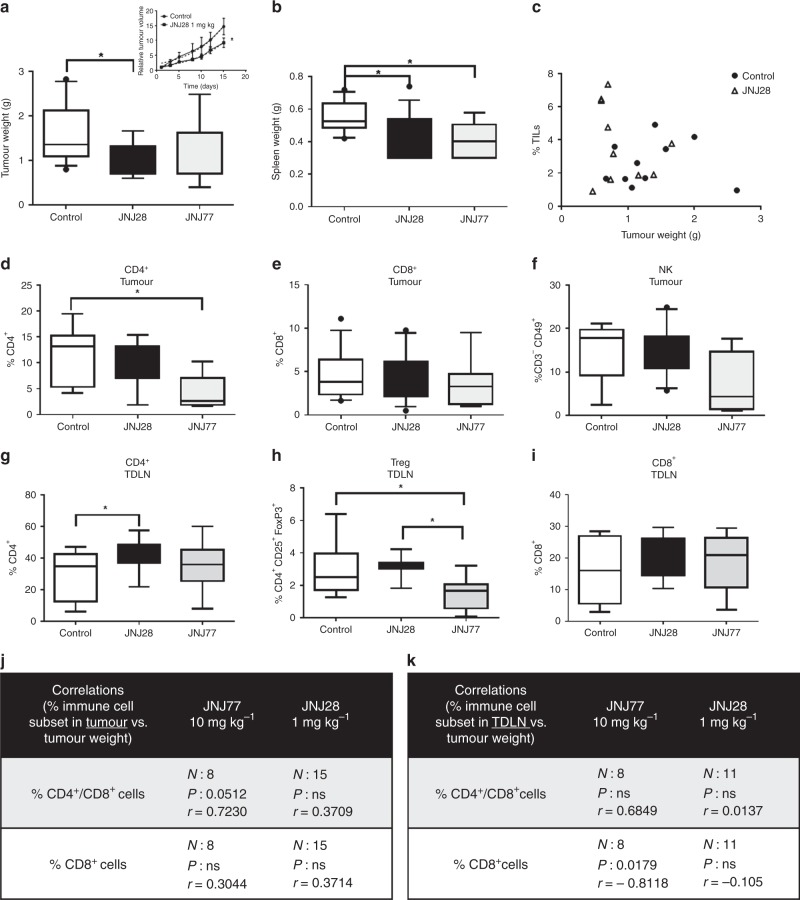Fig. 4.
Tumour growth parameters of 4T1 tumour-bearing mice treated with H4R ligands. 4T1 tumour-bearing mice were left untreated (control) or were treated with 1 mg kg−1 of the H4R agonist JNJ28610244 (JNJ28) or 10 mg kg−1 of the H4R antagonist JNJ7777120 (JNJ77) for 15 days. a Tumour weight at the end of the experimental period (n = 12 control; n = 14 JNJ28; n = 9 JNJ77). Inset: Tumour growth curves show the relative tumour volume for control and JNJ28-treated mice. b Spleen weight of control (n = 12), JNJ28 (n = 14) and JNJ77-treated (n = 9) 4T1 tumour-bearing mice. c The percentage of tumour-infiltrating lymphocytes (% TILs), determined by flow cytometric analysis of forward vs. side scatter, was correlated with tumour weight for control (n = 10) and JNJ28-treated (n = 10) mice. Spearman correlation (P > 0.05). d–k Tumour and tumour-draining lymph node (TDLN) cell suspensions were labelled with specific antibodies: d, g CD4-FITC: T helper lymphocyte marker (n = 7 control; n = 9 JNJ28; n = 7 JNJ77 for intratumoural. n = 13 control; n = 15 JNJ28; n = 10 JNJ77 for TDLN), e, i CD8-PE: T cytotoxic lymphocyte marker (n = 13 control; n = 15 JNJ28; n = 8 JNJ77 for intratumoural. n = 10 control; n = 11 JNJ28; n = 8 JNJ77 for TDLN), f CD49-PE and CD3-FITC: NK markers (n = 8 control; n = 10 JNJ28; n = 4 JNJ77 for intratumoural). h CD4-FITC, CD25-APC and FoxP3-FITC: regulatory T cells (n = 9 control; n = 11 JNJ28; n = 8 JNJ77 for TDLN). Box plots represent the median and interquartile range for each experimental group (Kruskal–Wallis test, *P < 0.05). Spearman correlation of j the percentage of tumour-infiltrating immune cell subsets vs. tumour weight and k the percentage of immune cell subsets in TDLN vs. tumour weight for mice treated with JNJ28 and JNJ77

